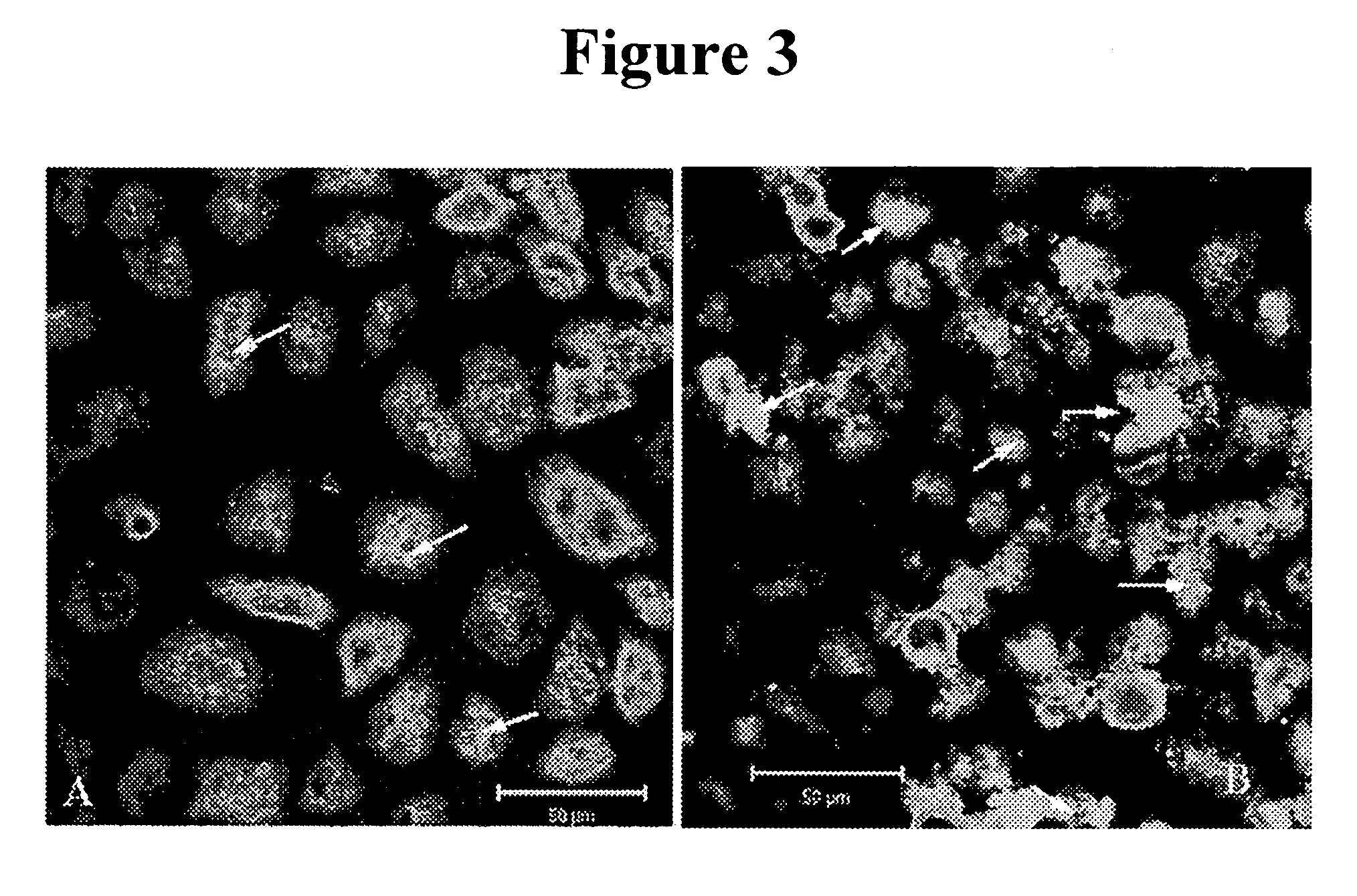Vitamin E tocotrienols inhibition of intracellularly obligate pathogen Chlamydia and methods of use
a technology of tocotrienols and vitamin e, which is applied in the direction of antibacterial agents, biocide, plant/algae/fungi/lichens ingredients, etc., can solve the problems of ectopic pregnancies and infertility, scarring and eventual infertility, and interfere with pathogen entry into host cells directly or indirectly, so as to reduce the effect of chlamydia-induced blindness
- Summary
- Abstract
- Description
- Claims
- Application Information
AI Technical Summary
Benefits of technology
Problems solved by technology
Method used
Image
Examples
example 1
[0129]Chlamydial Strains: Stocks of C. trachomatis serovar K / VR887 were grown in J774A.1 cells without centrifuge assistance. Infected cells were lysed, this stock aliquoted and frozen down in SPG freeze medium (75.0 g sucrose, 0.52 g potassium phosphate, 1.22 g sodium phosphate dibasic, 0.72 g glutamic acid, diluted in 100 ml ddH2O). These aliquots were stored in liquid N2 or at −80° C., and later thawed for use to infect monolayers.
[0130] Cell Lines Used: Mouse macrophages (J774A.1), human mammary tumor cells (MCF-7), and human epithelial cells (Hep-2), were obtained from the American Type Culture collection. Human mammary tumor cells (TMX2-28) were a kind gift from Dr. Arcaro, and human B-lymphocytes (JY) were a kind gift from Dr. Eric Martz. All cell lines were maintained in Richter's improved MEM insulin (IMEMZO, Irvine Scientific, Santa Ana, Calif.) with 5% fetal bovine serum (FBS, Atlanta Biologicals, Norcross, Ga.). Cells were grown to 80% confluence on 12 mm coverslips in ...
example 2
[0135] The methods of Example 1 were used in this study. Cells in culture were treated with delta tocotrienol concentrations of 5, 10, 20, 30, and 40 nmol / L, where the viscous Vitamin E compound is diluted in 100% EtOH without cytotoxicity. Controls incubated with the corresponding amounts of EtOH, as well as controls incubated with delta tocotrienol diluted in EtOH showed no difference in cell number when compared to cells grown in culture medium. At 630× magnification, the difference in size and morphology of inclusions was seen when comparing the tocotrienol-treated sample (FIG. 4A) to the control (FIG. 4B). Inclusions in (4A) were small, and did not fuse to the morphology of mature inclusions. In (4B), inclusions were mature, large, and solidly stained. Optical sections through the Z-axis (third dimension) demonstrate that these untreated cells (4B) were three-fold thicker than the tocotrienol-treated cells (4A). Therefore, the chlamydial inclusion volumes would be expected to b...
example 3
[0137]
TABLE 1Summary of Inclusion and Mouse Macrophage Cell CountInclusionsFirstSecondThird(per fieldInfectionInfectionInfectionof view)TreatedControlTreatedControlTreatedZControlLarge0.72.61.42.60.71.2(15-20 μm)Small4.510.00.63.21.12.1(≦10 μm)Total5.212.62.05.81.83.3Total / Cell0.0580.1110.0320.0730.0160.041Percent52.3%43.8%39.0%Inhibition
* Controls were cells that were infected, but never treated with delta tocotrienol
[0138] The methods of Example 1 were used in this study. Counts on all coverslips with experimental conditions as in FIG. 3 and 4 were done for the average of 10 fields of view. Cells were treated with 30 μmol / L concentrations of delta tocotrienol. Re-infectability was studied, where transfer of the supernatant containing infectious elementary bodies (EBs) from infected, tocotrienol-treated cells to uninfected, tocotrienol-treated cells (Table 1).
[0139] This observation suggested that repeated use of delta tocotrienol significantly reduces the level of infection by C...
PUM
| Property | Measurement | Unit |
|---|---|---|
| fluidity | aaaaa | aaaaa |
| microscopy | aaaaa | aaaaa |
| concentrations | aaaaa | aaaaa |
Abstract
Description
Claims
Application Information
 Login to View More
Login to View More - R&D
- Intellectual Property
- Life Sciences
- Materials
- Tech Scout
- Unparalleled Data Quality
- Higher Quality Content
- 60% Fewer Hallucinations
Browse by: Latest US Patents, China's latest patents, Technical Efficacy Thesaurus, Application Domain, Technology Topic, Popular Technical Reports.
© 2025 PatSnap. All rights reserved.Legal|Privacy policy|Modern Slavery Act Transparency Statement|Sitemap|About US| Contact US: help@patsnap.com



